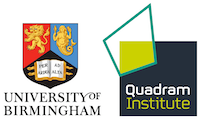Infection Resistance
Within the infection resistance topic, we are focussed on understanding how the early life microbiota protects against invading pathogens. We aim to unravel the specific mechanisms by which different microbiota members, particularly Bifidobacterium, confer these protective effects. Additionally, we investigate how pathogens navigate these defences to cause diseases.
Within the complex community of the gut microbiota, consisting of trillions of diverse microbes, we are seeking to uncover how various beneficial microbiota members, such as Bifidobacterium, may gain a competitive edge over potentially pathogenic microbes. This advantage is achieved through their superior capacity to efficiently digest dietary components, secure factors that are typically scarce in the gut (e.g., iron), and generate novel antimicrobial compounds. Our investigations also focus on identifying potential virulence factors of critical neonatal-associated pathogens, like Clostridium perfringens, and understanding the mechanisms by which these clinically significant microbes may disseminate among vulnerable populations. Our multi-disciplinary approach encompasses the development of innovative bioinformatic pipelines, applicable to sequencing or transcriptional data, as well as in vitroassays, molecular microbiology techniques, proteomics, and metabolomics. These endeavours aim to identify key strains capable of offering essential colonisation resistance against pathogens, including E. coli, Enterococcus, and Clostridium.
The urgent development of novel anti-infection strategies is underscored by the growing threat of antimicrobial resistance (AMR). Infants, and certain patient groups, frequently receive multiple courses of antibiotics, which, in addition to disrupting the gut microbiota, may contribute to the ‘resistome,’ involving the carriage of antimicrobial resistance and virulence genes within the microbial community. To address this pressing concern, we are pioneering innovative ‘diagnostic’ methods to profile the gut microbiota and detect potential pathogens along with their AMR profiles. Furthermore, we employ various molecular and computational approaches to explore the effects of antibiotics on the early life gut microbiota, utilising data from clinical cohort projects like BAMBI and PEARL. Our investigations encompass understanding how AMR genes may expand within the microbial community, including the transfer of resistant genes to pathogenic species.






